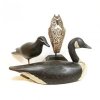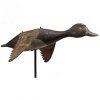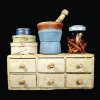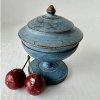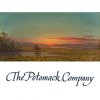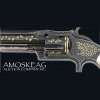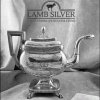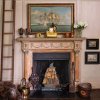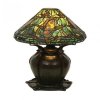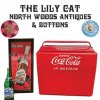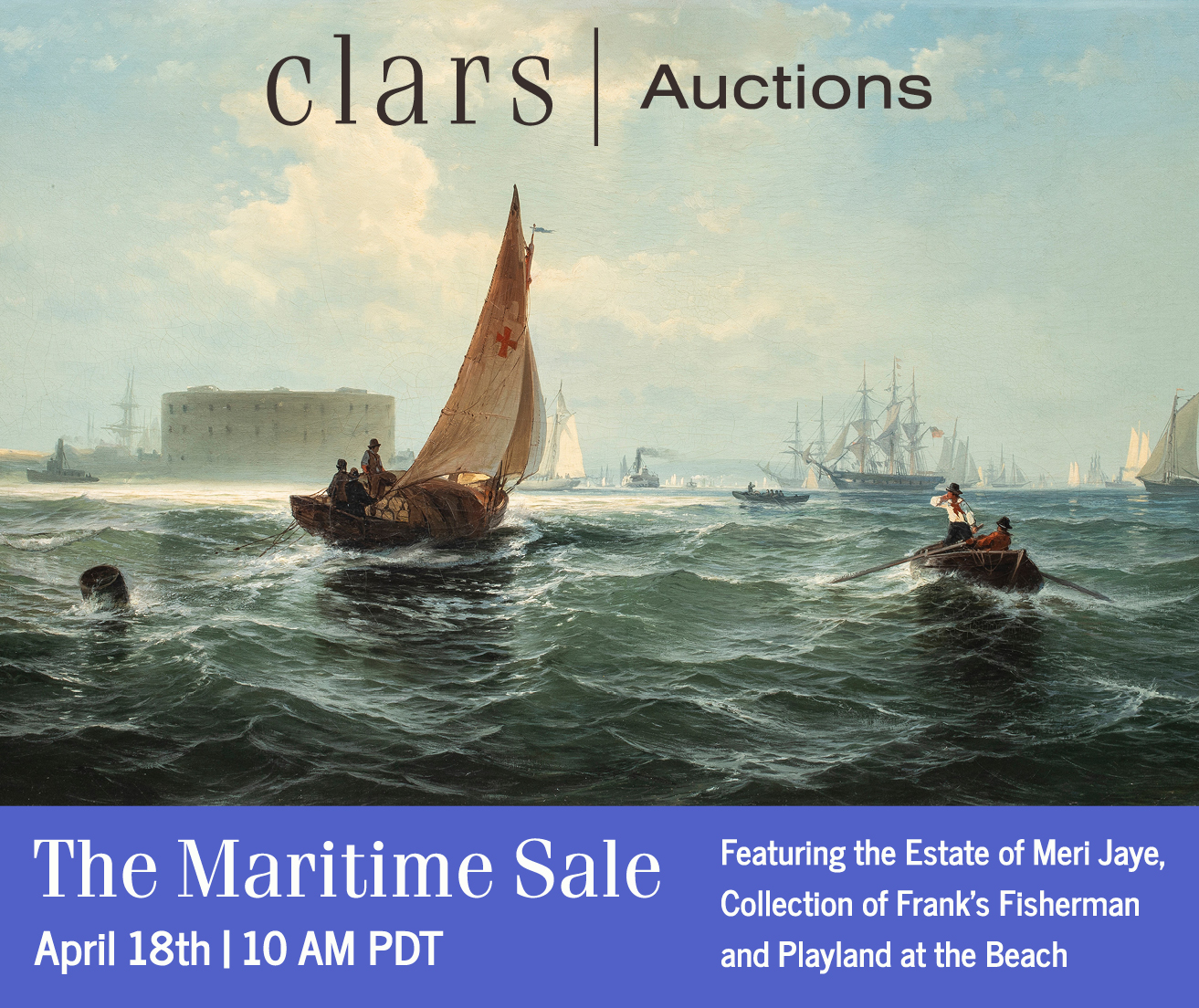Some Icons Return to Market
October 7th, 2016
Pook & Pook, Downingtown, Pennsylvania
Photos courtesy Pook & Pook
Pook & Pook’s Americana sale on October 7 and 8 was a big one. The 847 lots covered the full range of American furniture, ceramics, metalware, advertising, and paintings, collected by the last two generations of collectors. The sale provided a barometer for several parts of the antiques marketplace.
The good news is that there is still an active market—online, on phones, and in the salesroom, even though attendance in the salesrooms is not as large as it used to be and most prices are not as high. There remains competition for rare works that are well designed, in good condition, with original surface, and with reasonable estimates. Of the 847 lots offered, 784 sold, for a 92.6% sell-through rate and a tidy $1,370,324 total for the two-day sale. Add to that $181,162 for the October 10 online auction of 860 lots that included a lot of country store fittings available for inspection during the preview for the live auction, and the total spent on Americana at Pook in early October comes to a grand total of $1,551,486.
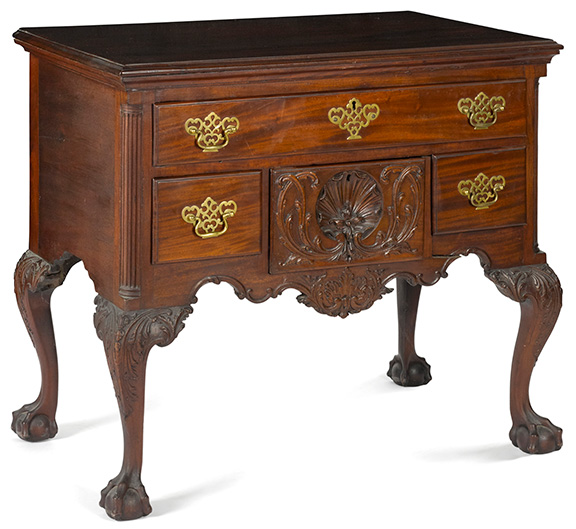
This stylish piece with good proportions is a circa 1765 Philadelphia Chippendale mahogany dressing table. The thumb-molded top overhangs the case with one long and three short drawers; the central lower drawer has a carved shell and tassels above a fully carved apron. It is supported by cabriole legs terminating in ball-and-claw feet. The 32" x 35" table with three replaced drawer facings and a repaired break to a rear leg sold for $21,600 (est. $20,000/30,000) to Bryn Mawr dealer Diana Bittel for a client.
Estimates were low to encourage bidding and avoid buy-ins. Lower prices allow new collectors to enter at an affordable level, and there were a number of young bidders buying furnishings for prices that they might pay at Ikea and far less than price tags at Bloomingdale’s. Others were outbid for what they hoped to take home. Those in the salesroom agreed that auctions are still the best free entertainment in town.
Pook offered free drinks and food from 4 to 6 p.m. on Friday night, when many came to preview. The ADA show at Deerfield and a clock conference at Winterthur may have kept attendance down—but not participation. On Friday, October 7, 40% of the lots offered went to bidders online with Bidsquare; on Saturday only 14% of the sale went to Bidsquare, but attendance in the salesroom was not larger. About three-quarters of the seats were taken at both sessions, but the crowd thinned as the sales progressed, and phones were busy.
Some icons of American folk art returned to market. One was a Lancaster County, Pennsylvania, painted dower chest with three recessed arched panels painted with red and green tulips in a vase above three drawers, on bracket feet, with its original hardware and a till with two smaller tills inside. It had been owned by some discerning collectors—George Horace Lorimer, a pioneer collector and legendary editor of the Saturday Evening Post and president of Curtis Publishing Company, and Julie and Sandy Palley, whose collection was sold at Sotheby’s in January 2002. The chest had sold at the Palley sale for $170,750. This time, estimated at $90,000/120,000, it brought $108,000 (includes buyer’s premium) from Bryn Mawr, Pennsylvania, dealer Diana Bittel in the salesroom, bidding for a client.
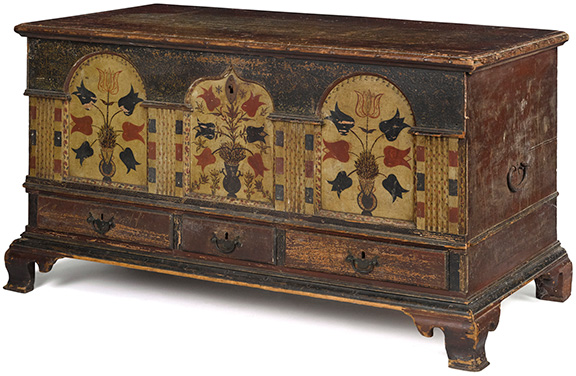
This Lancaster County, Pennsylvania, painted poplar architectural dower chest is dated 1795. The front has three recessed arched panels with potted tulips, flanked by molded pilasters, above three drawers supported by ogee bracket feet. The 27¾" x 47¾" x 25" chest had been sold at Sotheby’s on January 18, 2002, from the Palley collection for $170,750. At Pook & Pook it sold for $108,000 to dealer Diana Bittel of Bryn Mawr, Pennsylvania, in the salesroom, bidding for a client.
Another painted and dated dower chest, decorated with two painted panels with pots of flowers and the date 1786 on the front and a lion painted on each end, sold to West Chester, Pennsylvania, dealer Skip Chalfant in the salesroom, for $19,200 (est. $8000/12,000), underbid by Bittel and a phone bidder.
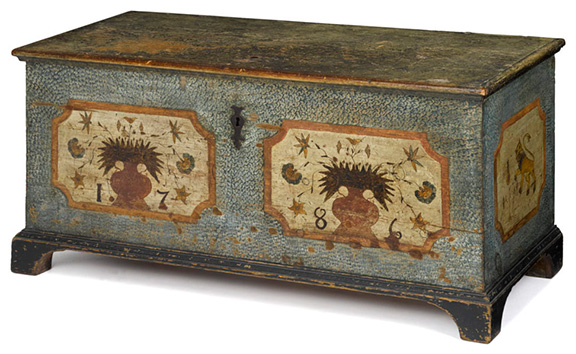
This Pennsylvania German painted pine dower chest with overall blue-sponged decoration has on its front two ivory panels with pots of flowers bearing the date 1786. The ends are decorated with vibrant rampant lions and tulip buds, all resting on straight bracket feet. The 18" x 48" x 17" chest sold in the salesroom for $19,200 to dealer Skip Chalfant.
A similar chest is posted for sale on the website of Olde Hope Antiques, New Hope, Pennsylvania, with a lion painted on one end and a bird on the other and remains of painted panels on its lid and replaced bun feet. Olde Hope’s chest was first published in Fabian’s pioneer book The Pennsylvania-German Decorated Chest in 1978. Fabian suggested that it was decorated by fraktur artists, perhaps Henrich Otto and someone who was influenced by him. The chest at Pook has been fitted with an old period base. The chest with Olde Hope is not dated, but the two chests probably were painted by the same decorator at about the same time.
A New England painted pine sailor’s game board sold on the phone for $48,000 (est. $20,000/30,000). It is inscribed “Presented to B.A. Merrill by his Father July 12th, 1857” and painted with a central checkerboard flanked by American flags, and on the back there is a relief-carved ship. It has an auction history. When it had sold at Sotheby’s in January 1997, it brought $25,300 from collector Virginia Pope Cave. At Cave’s sale at Northeast Auctions on August 5, 2000, it had sold for $46,000. The underbidder at Northeast Auctions came to Pook & Pook to look it over on Friday, and on Saturday he bought it on the phone.
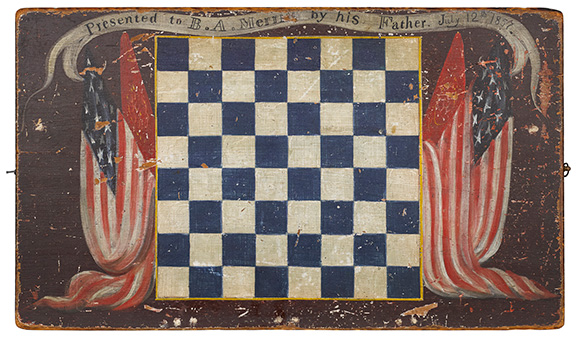
This New England painted pine sailor’s game board is inscribed “Presented to B.A. Merrill by his Father July 12th 1857.” The front has a central checkerboard flanked by American flags; the reverse (not shown) has a large relief-carved ship. The 12¼" x 21" board sold for $48,000 (est. $20,000/30,000). At Northeast Auctions on August 5, 2000, from the collection of Virginia Ramsey-Pope Cave, it had sold for $46,000. It had sold at Sotheby’s, January 1997, to Virginia Cave for $25,300, having been consigned by the Art Institute of Chicago.
Pook had consignments from several private collections. The Friday evening sale began with the “entire collection” of the late Louis and Shirley Hecht of Baltimore. Rarities were not overlooked. An unusual York County fraktur birth certificate, dated 1835, with its design either stenciled or stamped, sold for $1440 (est. $300/500). With a few exceptions, fraktur generally sold within modest estimates.

Attributed to David Cordier of southeastern Pennsylvania, active 1814-19, the ink and watercolor fraktur for Christina Ulrich (top), with central script surrounded by faces, birds, and tulips, is 6¾" x 8". This is an exceedingly rare example by this artist. Pook sold one other Cordier fraktur on October 8, 2004, from the collection of Dr. and Mrs. Donald Shelley ($32,200). Accompanying the Ulrich fraktur was a later 7¾" x 8" ink bookplate made for her husband, Zachariah Allbaugh, in Dayton, Ohio, dated 1825. The lot sold on the phone for $16,800 (est. $4000/6000).
There was good competition for rare spatter. Two rare spatter sugar bowls each brought $3120. One is decorated with a fort and the other with a rare variant of a bird; both had rainbow spatter rims. A miniature blue spatter cup and saucer with a yellow tulip painted in the center of the saucer and on the side of the cup also sold for $3120 (est. $200/400). Five bidders competed for a miniature blue and purple rainbow spatter cup and saucer, and it sold for $2040 (est. $200/400); the same price was paid for a full-size red spatter cup and saucer with a yellow bull’s-eye in the center of the saucer and in the center of the cup. A rare red, green, blue, and black rainbow spatter cup and saucer, estimated at $1000/2000, sold for $1020. If the yellows on the cup exactly matched the yellow on the saucer, it would have brought more. Plenty of spatterware and feather-edge peafowl tea wares sold for less, some of it online and much of it in the salesroom to Robesonia, Pennsylvania, dealer Greg Kramer, who seems to try to own every good piece of spatter and redware that comes on the market.
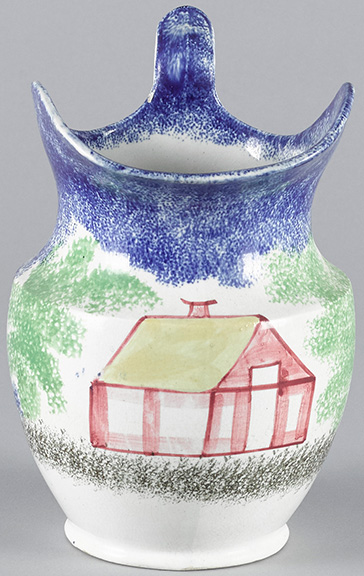
This blue spatterware pitcher with schoolhouse decoration, 9 3/8" high, sold for $3600 (est. $400/800).
Buyers looked things over carefully. Printed condition reports were available at the preview, and absent bidders could read condition reports on Bidsquare. Pieces with chips or hairlines sold at the low end of estimates.
There were bargains in furniture. A circa 1770 Pennsylvania high chest with trifid feet, 75" high and cataloged as with original brasses, sold for $2880 (est. $4000/7000) to a young collector.
 Painted furniture provoked competition, especially it if was painted blue. A Berks County, Pennsylvania, painted walnut stretcher-base tavern table with a central drawer flanked by two small drawers, all on baluster turned legs with a blue-painted base and a scrubbed top, sold on the phone to the trade for $16,800 (est. $12,000/15,000). Three phone bidders competed for a small Shenandoah County, Virginia, hard pine sugar chest painted electric blue and inscribed on its lid “James C. Foltz, Lantz Mill, Shenandoah C.V.” The fall front is inscribed “Charles Fodley.” It sold for $15,600 (est. $6000/10,000). A Pennsylvania painted hard pine Dutch cupboard with later blue paint but with carving on its doors and drawers sold for $10,200 (est. $4000/8000) to Diana Bittel for her client furnishing a house. A Connecticut painted pine schoolmaster’s desk with light blue paint sold for $7800 (est. $2000/3000).
Painted furniture provoked competition, especially it if was painted blue. A Berks County, Pennsylvania, painted walnut stretcher-base tavern table with a central drawer flanked by two small drawers, all on baluster turned legs with a blue-painted base and a scrubbed top, sold on the phone to the trade for $16,800 (est. $12,000/15,000). Three phone bidders competed for a small Shenandoah County, Virginia, hard pine sugar chest painted electric blue and inscribed on its lid “James C. Foltz, Lantz Mill, Shenandoah C.V.” The fall front is inscribed “Charles Fodley.” It sold for $15,600 (est. $6000/10,000). A Pennsylvania painted hard pine Dutch cupboard with later blue paint but with carving on its doors and drawers sold for $10,200 (est. $4000/8000) to Diana Bittel for her client furnishing a house. A Connecticut painted pine schoolmaster’s desk with light blue paint sold for $7800 (est. $2000/3000).
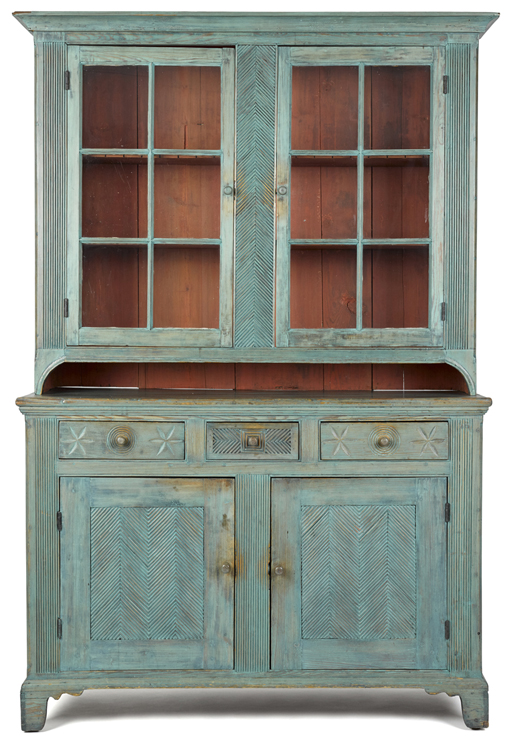
From the Mahantongo area of Pennsylvania, this early 19th-century painted hard pine Dutch cupboard with elaborately reeded pilasters and lower doors and star-carved drawers, retaining a later blue surface, 81½" x 52¾", with a Titus Geesey provenance, sold for $10,200 (est. $4000/8000).
The piece of furniture featured on the catalog cover was an unusual 1731 New York William and Mary walnut tea table with a bold baroque trumpet-turned base and with floral inlay on its top and sides. It failed to get a bid, even though it had sold for a big price at Northeast Auctions in August 2003. (It “sold to a Virginia collector for $93,250” as reported by David Hewett for M.A.D.) Some questioned the age of its top. The English brass candlestick pictured atop it in the Pook & Pook cover picture with a $20,000/25,000 estimate also failed to sell. It’s called “the curse of the cover photo” in the trade.
The candlestick was one of three rare early candlesticks from the published Lear collection in Britain. Only one of the candlesticks sold, bringing $7200 (est. $8000/10,000). Some said collectors prefer early brass sticks, unpolished, with an old patina. A pair of brass andirons similar to a pair attributed to Daniel King that had sold at Pook & Pook in April 2009 for $25,740 sold for $6000 (est. $6000/8000) to Diana Bittel for her client.
Stoneware has settled down at a new lower price level. A Charlestown, Massachusetts, stoneware crock, impressed “Edmands & Co.” and decorated with a cobalt stag, sold for $4560 (est. $1500/2500), about half the $8400 paid for it at Sotheby’s in January 2003 (est. $5000/7000). Stoneware jugs with reasonable estimates in the $500/1000 and $1500/2500 range brought mid-estimate prices.
Two rare octagonal redware plates, each about 6" diameter, sold for $9000 and $10,800 (each est. $8000/12,000). Two slip-decorated 8" round plates that Pook & Pook had sold at the Paul and Rita Flack sale in October 2012 for $17,775 and $11,258 sold this time for $14,400 and $6000. Cup plate-size redware, 4" and 4 3/8" diameter, sold over estimates for $1680 (est. $500/1000) for one with slip stripes and $1440 (est. $500/1000) for one with dots, both to the same phone bidder.
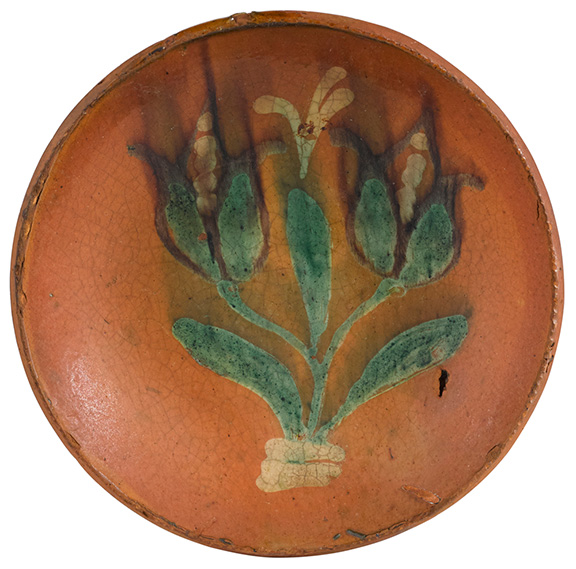
This Pennsylvania redware pie plate, 19th century and attributed to the Diehl Pottery, with yellow, green, and brown slip decoration, 8½" diameter, had sold at Pook & Pook at the Flack sale on October 27, 2012, for $11,258 (est. $5000/10,000). It sold this time for $6000 (est. $4000/8000) to dealer Greg Kramer.
A small Pennsylvania octagonal toleware tray with vibrant orange and foliate decoration on a black background, 8¾" long, sold for $2706 (est. $1200/1600). At the Richard and Joane Smith collection sale at Pook & Pook in October 2010, it had sold for $3081. Tole in less pristine condition brought a lot less. For example, three tole trays sold as one lot for $210 (est. $300/500).
A bone shaker bicycle made by “Wood Bros. / 596 / Broadway N.Y.” was labeled twice by its maker and documented in a Harper’s Weekly advertisement. It sold to Pennsylvania collector Charles Wilson on the phone for $10,200 (est. $10,000/14,000). “It was made in 1869 and is the first bicycle designed with the pedals attached to the front wheel. By 1870 these wooden bone shakers were history,” said Wilson when he came to pick up his purchase. “After the invention of the wire wheel, the size of the wheel could be larger, and the highwheelers replaced these wooden bicycles. This one is so original I had to have it. There is nothing to restore except the string that was attached to the brake. The fact that it has had only two owners in eighty years who didn’t touch it really got to me.”
For more information, contact Pook & Pook at (610) 269-4040 or see the website (www.pookandpook.com).
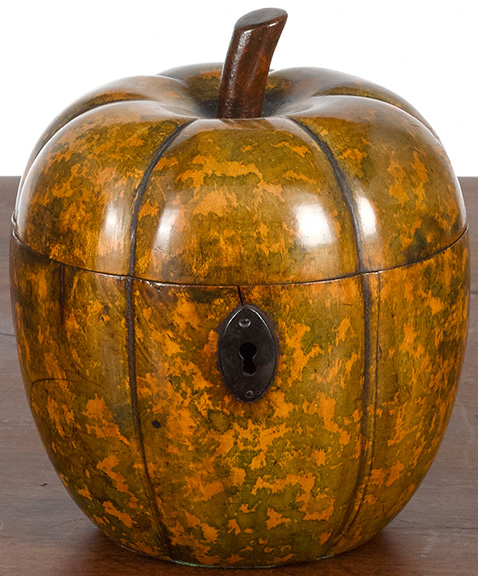
This English painted fruitwood tea caddy in the form of a gourd or pumpkin, early 19th century, is 5" high and sold for $5166 (est. $300/400). Most tea caddies were shaped as apples or pears. This rare form was not overlooked and brought a premium price.
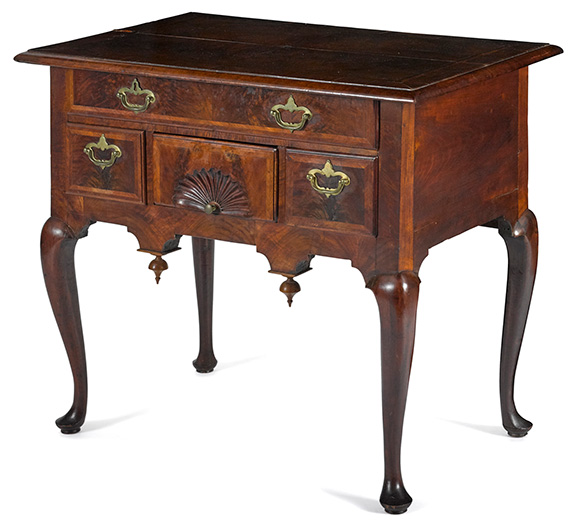
This Boston Queen Anne burl walnut veneer dressing table, circa 1760, with a shell-carved drawer and cabriole legs terminating in pad feet, 29½" x 33¾", ex-Israel Sack, sold to a phone bidder for $11,400 (est. $4000/8000).
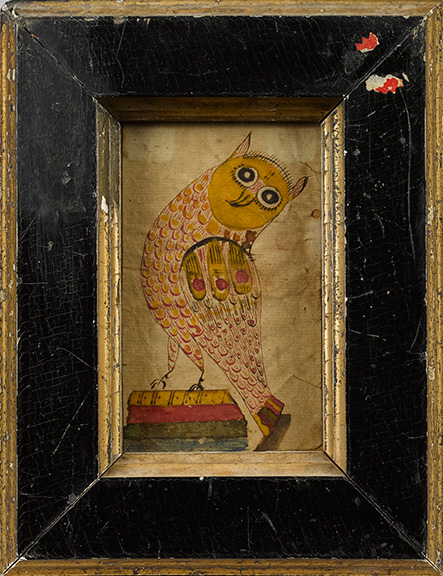
This early 19th-century southeastern Pennsylvania ink and watercolor fraktur drawing, 4 3/8" x 2 5/8", sold to the trade on the phone for $14,400 (est. $2000/4000). A similar one, perhaps by another hand and inspired by the same printed source, from the collection of Ralph Esmerian sold at Sotheby’s Esmerian sale in January 2014 for $46,875 (est. $20,000/30,000). Esmerian had bought it for $46,875 at the Flack sale that Christie’s ran on site in Holicong, Pennsylvania, on September 6, 1997. The owl that sold at Pook’s needs cleaning. The owl, a symbol of wisdom and appropriately perched on a pile of books, could have been a reward of merit given by a schoolmaster.
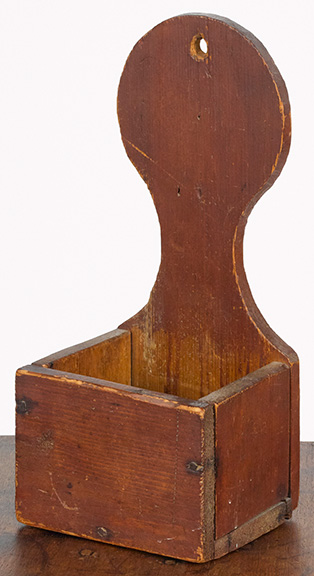
There was a lot of competition for this New Jersey or New York carved cherry spoon rack, late 18th century, with a chip-carved pinwheel and sawtooth decoration. The 24" x 8¾" rack sold in the salesroom to dealer Sam Forsythe of Columbus, Ohio, for $16,800 (est. $4000/8000).
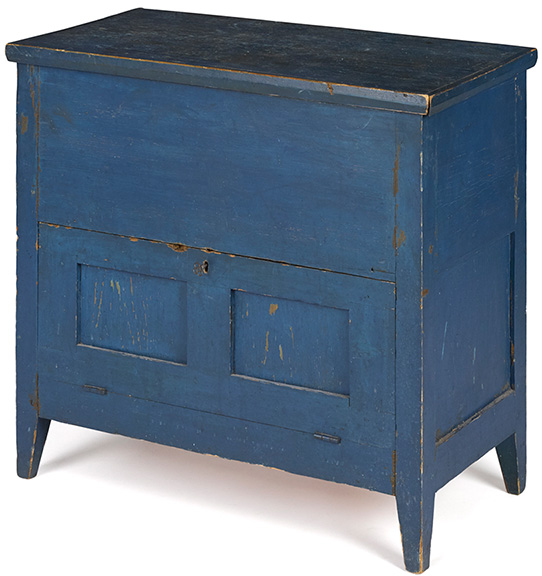
Three phone bidders competed for this small (26¼" x 26¼") Shenandoah County, Virginia, hard pine sugar chest in bright blue paint, 19th century. It retains its original vibrant blue surface. The underside of the lid is inscribed “James C. Foltz Lantz Mill Shenandoah C V.” The fall front is inscribed “Charles Fodley.” James Foltz operated a distillery in the small hamlet of Lantz Roller Mill. The chest sold on the phone for $15,600 (est. $6000/10,000).

This Snap Wyatt seven-part oil on canvas circus banner for “Clarke Bro’s. Circus” that illustrated world’s tallest giant, a tattooed lady, a snake charmer, a pin head, a fire eater, and Irene the fat lady, 21" x 87", sold on the phone for $8400 (est. $2000/3000).
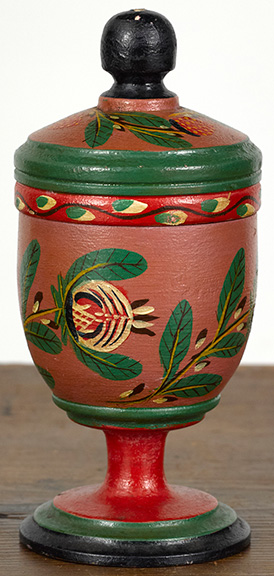
Two phone bidders competed for this 5¾" high cup by Joseph Lehn (1798-1892) of Lancaster, Pennsylvania. The turned and painted lidded saffron cup, inscribed on the underside “Presented to Lizzie B. Huber by Camelia Bollinger May 16, 1886,” sold on the phone for $1680 (est. $400/600).
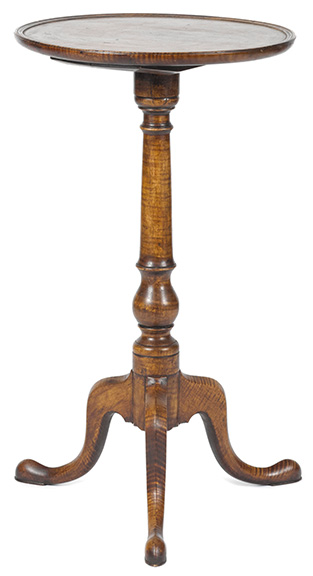
There was a lot of competition for this late 18th-century tiger maple candlestand, 27½" x 15½", and it sold on the phone for $4080 (est. $800/1200).
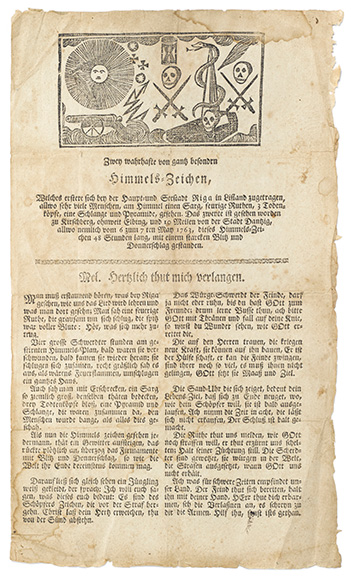
A 13'' x 7¾" printed broadside, attributed to printer Nikolaus Hasselbach of Baltimore, 1765, titled “Zwey Wahrhafte Von Gantz Besondern Himmels-Zeichen” has an emblematic woodblock illustration of signs of Heaven and God’s warning, with a hymnal verse below. One of three known examples, each of a slightly different variation, it sold for $5520 (est. $1500/2500).
Originally published in the December 2016 issue of Maine Antique Digest. © 2016 Maine Antique Digest



